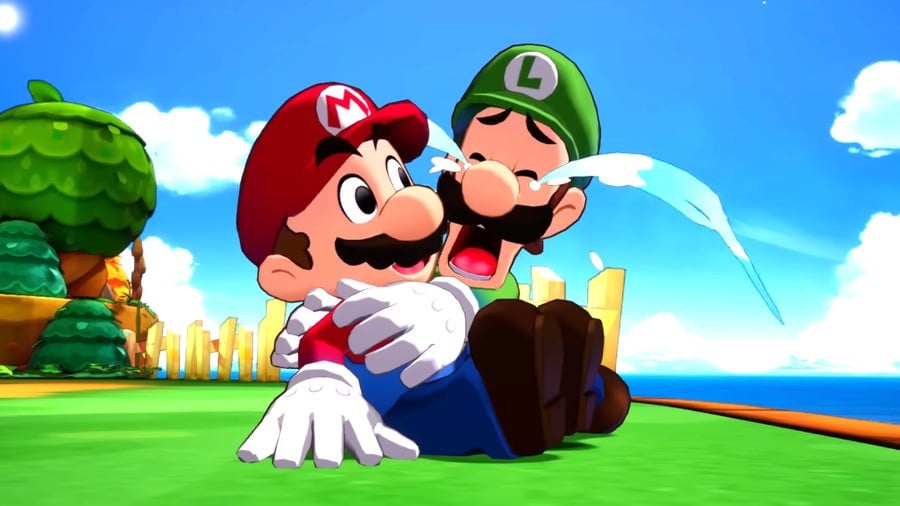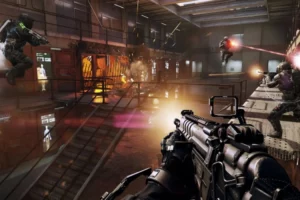What should have been a purely celebratory launch for Nintendo’s latest Mario & Luigi adventure, a surprising controversy has emerged from the depths of the gaming community. The newly released Mario & Luigi: Brothership for Nintendo Switch has sparked heated debate among series veterans over what might seem, to outsiders, like a minor control adjustment.
At the heart of the controversy lies a fundamental change to Luigi’s battle controls – a modification that has longtime fans questioning Nintendo’s decision to alter a formula that has served the franchise well for years. Traditionally, the Mario & Luigi series has maintained a straightforward control scheme: the ‘A’ button for Mario and the ‘B’ button for Luigi, creating an intuitive system that players have mastered over multiple entries in the beloved RPG series.
The new installment, however, introduces a significant tweak to this time-tested formula. While players can still execute Luigi’s attacks using the ‘B’ button, they must first navigate his battle menu using the ‘A’ button – a change that has proven surprisingly disruptive for series veterans whose muscle memory has been honed over years of gameplay.

It’s like trying to write with your non-dominant hand,” one frustrated fan posted on social media. Nine years of muscle memory just went out the window.” This sentiment has been echoed across various gaming communities as players grapple with the adjusted control scheme.
The change might appear trivial to newcomers, but for dedicated fans who have invested countless hours in previous entries, it represents a jarring departure from tradition. The Mario & Luigi series has always prided itself on its precise timing-based combat system, where button inputs need to be executed with perfect accuracy for maximum effectiveness. The control modification has led to numerous reports of missed attacks and botched battle sequences as players struggle to adapt to the new system.
Industry observers speculate that Nintendo’s decision might be an attempt to make the game more accessible to new players, as the ‘A’ button is universally recognized as the ‘accept’ button across most gaming platforms. However, this reasoning has done little to comfort longtime fans who argue that the original control scheme was already perfectly intuitive, following the natural association of each brother with their designated button.
The timing of this controversy is particularly interesting given that Brothership marks the first original entry in the series in nine years. While the franchise has seen several remakes in the interim, this new installment represented an opportunity to both honor the series’ legacy while pushing it in bold new directions. The control scheme modification appears to have become an unexpected flashpoint in the broader discussion about balancing tradition with innovation in long-running gaming franchises.
Despite the control controversy, early reviews for Mario & Luigi: Brothership have been overwhelmingly positive, with critics praising its innovative nautical setting, charming character interactions, and refined battle system. The game has been lauded for its visual improvements and maintaining the series’ signature quirky humor while introducing fresh gameplay elements that complement the maritime theme.
One prominent gaming outlet even declared Brothership “easily the best Mario & Luigi RPG yet,” suggesting that the control scheme adjustment, while controversial, hasn’t significantly diminished the overall quality of the experience. This praise indicates that while the button change may require an adjustment period for veteran players, the game’s numerous improvements and innovations might well be worth the temporary discomfort.
The situation raises interesting questions about game design and the delicate balance between innovation and tradition in long-running series. While developers must constantly evolve their franchises to attract new audiences, they must also consider the expectations and muscle memory of their devoted fanbase who have supported the series through multiple iterations.
As players continue to adapt to the new control scheme, the controversy serves as a reminder that even small changes to beloved gaming franchises can have significant impacts on player experience. Whether this modification will be viewed as a minor speedbump or a lasting point of contention in the series’ evolution remains to be seen as more players dive into this latest nautical adventure.
















Add Comment